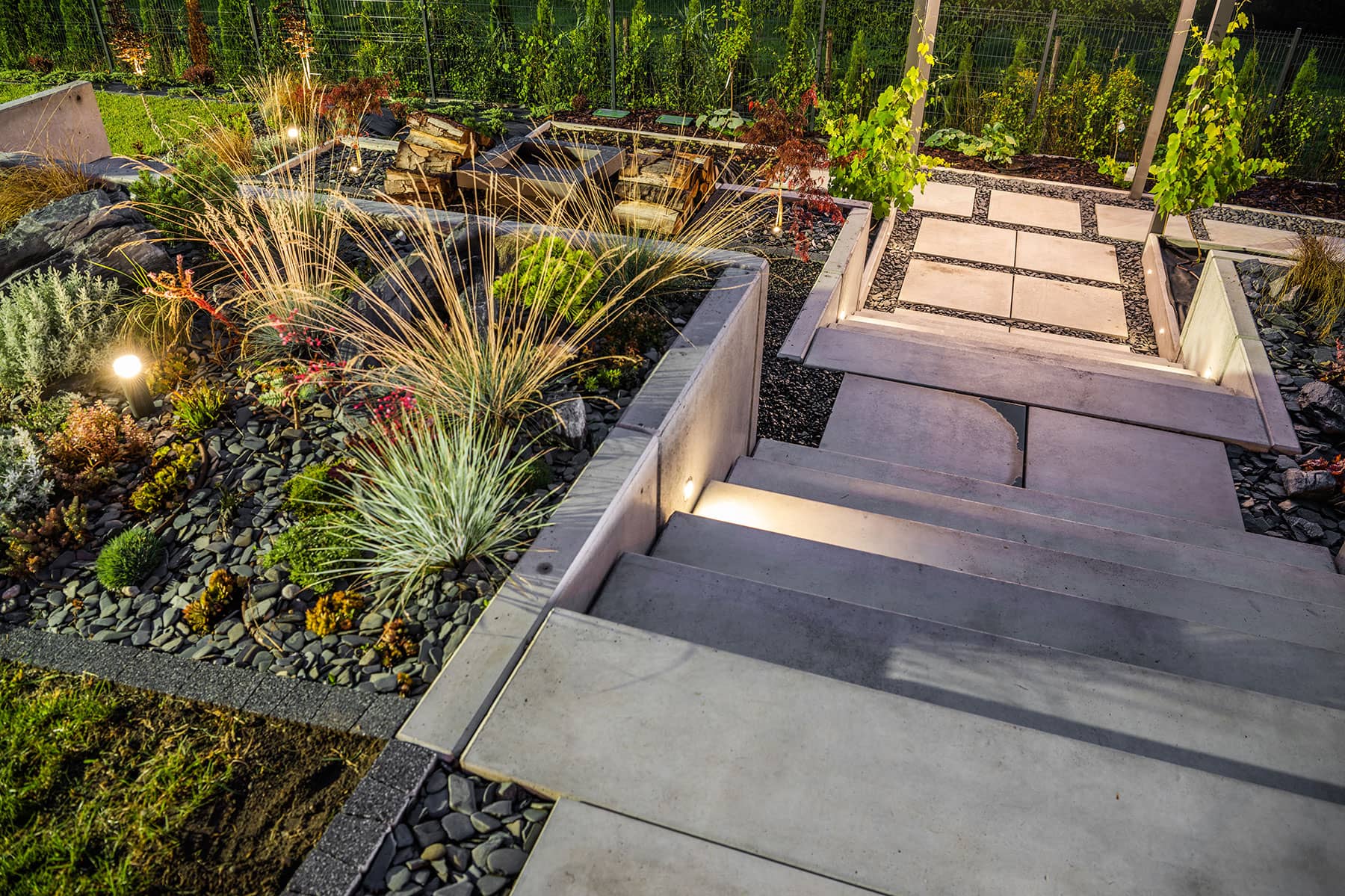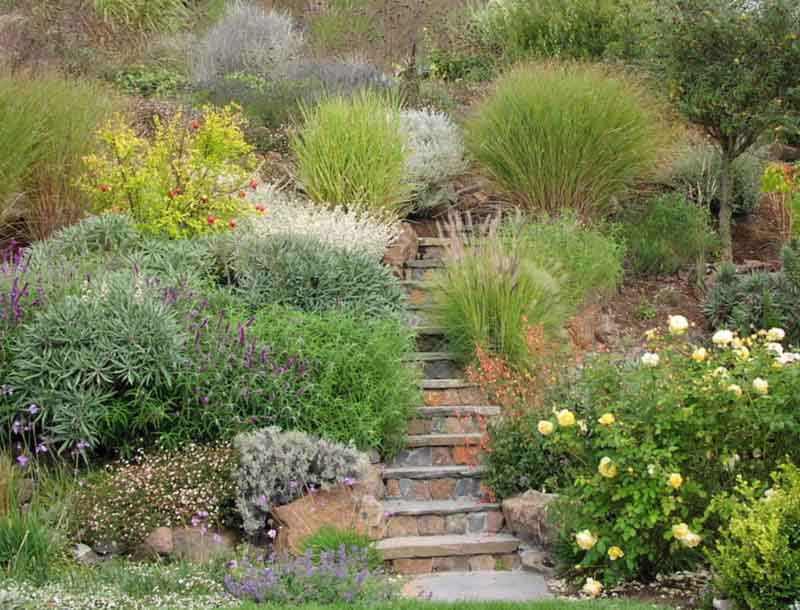Best erosion control methods for Steep hill landscaping success.
Wiki Article
Accomplish a Lovely Outside Oasis With Thoughtful Steep Hillside Landscaping Solutions
Transforming a high hillside right into a fascinating outside sanctuary provides distinct obstacles that need innovative landscape design options. By dealing with concerns such as disintegration control and accessibility, one can develop a harmonious mix of charm and functionality. Strategies such as terracing, the installment of maintaining walls, and the choice of native plants play important roles in this procedure. Additionally, including water features can better improve the landscape's attraction. Nevertheless, recognizing the complexities of these components is important for attaining a really natural and inviting atmosphere. What strategies will best fit your hill's specific attributes?Understanding Steep Hill Challenges
Landscape design on high hillsides presents unique obstacles that call for cautious factor to consider and critical planning. The inclination of the surface can lead to issues such as dirt erosion, water runoff, and minimal access, every one of which should be addressed to develop a practical and visually pleasing outdoor room.One of the primary problems with high hill landscape design is erosion, which can result from hefty rainfall or inappropriate drain. This not only influences plant health and wellness however can additionally endanger the stability of the incline. Executing reliable disintegration control measures, such as growing deep-rooted plant life or using compost, is vital in preserving the honesty of the landscape.

Designing With Terracing Techniques
To mitigate the challenges posed by steep hills, including terracing strategies can be a reliable remedy. This layout strategy changes a sloped landscape right into a series of flat, level locations, developing an aesthetically striking and practical outside space. Terracing not only aids to avoid dirt erosion but also facilitates far better water drain, which is important in preserving the health of plants and the security of the hill.When creating terraces, careful factor to consider of the slope's angle and the soil kind is necessary. Each terrace should be purposefully put to optimize sunlight direct exposure while lessening the danger of runoff. Making use of native plants on each degree can improve biodiversity, promote sustainability, and lower maintenance needs. Furthermore, incorporating paths between balconies can enhance accessibility and urge exploration of the landscape.
Terraced yards can serve several purposes, including veggie production, decorative displays, or outside seats areas. By making use of materials that blend sympathetically with the surrounding environment, the terracing can improve the overall aesthetic allure of the residential or commercial property. Inevitably, thoughtful terracing transforms steep hillsides right into functional, lovely spaces that invite communication and enjoyment.
Executing Preserving Walls
When faced with the difficulties of high terrain, executing maintaining wall surfaces can provide both structural assistance and visual improvement to a landscape. These walls serve to avoid dirt disintegration, stabilize slopes, and produce level locations for horticulture or entertainment use. Steep hill landscaping. By efficiently handling water overflow and lowering dirt movement, retaining walls shield your landscape financial investment while enhancing safety and security
Expert installment is vital to ensure the long life and effectiveness of maintaining walls. Appropriate drainage systems need to be included to ease hydrostatic stress, avoiding architectural failure. Consulting with landscape experts will certainly ensure that the style straightens with your overall vision while sticking to neighborhood policies.
Deciding On Native Plants
Choosing indigenous plants for your landscape visit our website layout offers many eco-friendly and aesthetic benefits. Steep hill landscaping. Indigenous plants are adjusted to the local climate and soil problems, calling for less water and maintenance compared to non-native types. This flexibility not just conserves resources however additionally advertises a healthier community, as native plants sustain neighborhood wild animals, consisting of pollinators such as bees and butterfliesIncorporating native plants into your high hillside landscape design can boost soil stability, decreasing erosion and promoting a balanced environment. Ingrained indigenous plants aid secure the dirt, making them excellent for sloped locations. Furthermore, these plants frequently display lively colors and diverse structures, producing a visually attractive landscape that harmonizes with the surrounding environment.
When choosing native plants, consider their growth behaviors, seasonal passion, and compatibility with various other types. Grouping plants with similar water and sunshine needs can lead to a much more cohesive look at this site layout, while additionally simplifying maintenance. By picking indigenous plants, you not only cultivate a lasting outside oasis but additionally add positively to the local biodiversity, making certain that your landscape prospers for many years to come.
Incorporating Water Attributes
Integrating water features right into your high hill landscape design can substantially improve both the visual appeal and ecological capability of the area. The sound of moving water produces a serene ambience, while visually, it can function as a centerpiece that draws the eye and includes depth to the landscape.When choosing water features, take into consideration options that enhance the natural shapes of your hill. Waterfalls, for example, can cascade down the incline, creating aesthetic interest and advertising healthy and balanced drain. Fish ponds can likewise be incorporated into the style, encouraging regional wild animals and offering environments for various types.
Moreover, the placement of plants around these attributes is essential. Indigenous marine plants not only improve the beauty of the water function yet also contribute to its eco-friendly balance by filtering contaminants and giving food for local animals.
Upkeep is another essential aspect; ensure that your water feature is created for very easy upkeep. A correctly created attribute will require very little treatment, anonymous permitting you to enjoy the beauty and serenity it uses without too much labor. Inevitably, thoughtfully incorporated water features can transform your steep hill landscape into a fascinating outside sanctuary.
Verdict
In verdict, changing a high hill into a lovely outdoor sanctuary necessitates thoughtful landscape design methods that resolve erosion control and ease of access. The assimilation of terracing methods, the implementation of preserving walls, and the choice of native plants are necessary elements of reliable design. In addition, including water attributes boosts both visual charm and drain efficiency. With careful preparation and implementation, high hillsides can become serene hideaways that supply both capability and visual delight.Report this wiki page